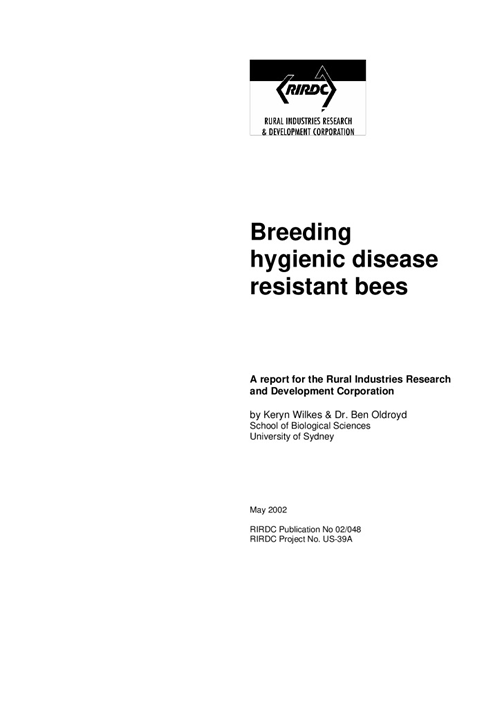National Honey Bee Breeding Strategy 2024-2029
In all livestock industries, genetic selection has been used to increase animal productivity and, by extension, enterprise profitability. The Australian honey bee industry is no...
 HONEY BEE & POLLINATION
HONEY BEE & POLLINATION 
35 pages
Published: 1 May 2002
Author(s): Wilkes, Keryn, Oldroyd, Ben, Dr.
Download report PDF
DownloadPurchase a hard copy - AUD $45.00
Chalk brood is a highly infectious disease of honeybee brood. Since first being identified here in 1993, it has spread rapidly throughout Australia. Losses to honey production have proved significant. Chalk brood cannot be effectively treated by the chemotherapeutic or comb sterilisation techniques often employed to treat other brood diseases.
The uncapping and removal of dead and diseased brood (hygienic behaviour) is a heritable behavioural trait of some honeybee strains. Hygienic behaviour is the primary mechanism of resistance to chalk brood and other brood diseases, such as American foulbrood. Hygienic colonies also have some resistance to infestation by the parasitic mite Varroa jacobsoni.